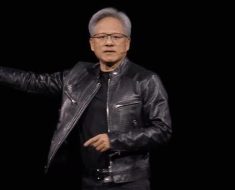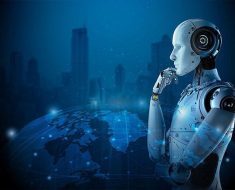The convergence of biomimicry and artificial intelligence holds immense potential for creating sustainable AI solutions that benefit both society and the environment. This exciting field seeks to draw inspiration from nature’s resourcefulness and efficiency to tackle the challenges of resource consumption, energy demand, and environmental impact associated with traditional AI approaches.
Here are some exciting possibilities at the intersection of biomimetic and sustainable AI:
Despite these challenges, the potential rewards of biomimetic sustainable AI are undeniable. By embracing nature’s wisdom and combining it with the power of AI, we can create a future where technology and the environment coexist in harmony. This emerging field holds the key to building a more sustainable and prosperous future for all.
Technology in Biomimetic Artificial General Intelligence (AGI)
Biomimetic AGI, a fascinating subfield of artificial intelligence, seeks to build AGI systems by drawing inspiration from biological intelligence. This involves leveraging various technologies to understand and replicate, albeit computationally, the functionalities and capabilities of the brain and nervous system.
Here are some key technologies powering biomimetic AGI:
1. Neuromorphic computing: This technology aims to build hardware and software architectures that mimic the structure and function of the brain. Instead of traditional silicon chips, neuromorphic chips use analog circuits and interconnected processing units for parallel processing, similar to how biological neurons operate. This potentially leads to more efficient and energy-saving computation, crucial for complex AGI tasks.
2. Artificial neural networks (ANNs): Inspired by the interconnected network of neurons in the brain, ANNs are mathematical models that learn and improve through training on large datasets. Biomimetic approaches involve incorporating biological principles like Hebbian learning (strengthening connections used frequently) and synaptic pruning (eliminating unused connections) into ANNs, enhancing their learning capabilities and adaptability.
3. Evolutionary algorithms: Inspired by natural selection, these algorithms simulate the process of evolution through iterative generations. By evaluating and breeding populations of potential solutions, biomimetic AGI systems can potentially discover novel solutions to complex problems, similar to how biological organisms adapt to changing environments.
4. Sensorimotor control systems: Taking inspiration from biological sensory systems and motor control pathways, these systems enable robots and other AI agents to interact with their environment and respond to stimuli in real-time. Biomimetic sensors, such as artificial olfactory and tactile sensors, could provide richer environmental data for AGI systems, improving their perception and action capabilities.
5. Embodied cognition: This concept emphasizes the importance of an agent’s physical embodiment in shaping its cognition and behavior. Biomimetic robots with sophisticated sensory-motor systems and embodied learning algorithms could interact with the world in a more natural and dynamic way, improving their ability to learn and adapt in complex environments.
Challenges and Future Directions:
Biomimetic AGI faces significant challenges. Accurately mimicking the intricate and complex processes of the brain remains a major hurdle. Additionally, scaling up these technologies for practical applications requires considerable advancements in hardware and software capabilities.
However, the ongoing research and development in fields like neuroscience, materials science, and artificial intelligence suggest a bright future for biomimetic AGI. By continuously refining and integrating these technologies, we can potentially develop AGI systems with a level of adaptability, efficiency, and environmental awareness that surpasses current AI systems.
The potential applications of biomimetic AGI are vast, ranging from robotics and healthcare to sustainable development and space exploration. By harnessing the wisdom of nature and the power of artificial intelligence, we can create a future where technology seamlessly integrates with and enhances our lives in ways we can only begin to imagine.
Conclusion for Biomimetic Artificial General Intelligence (AGI)
Biomimetic AGI, at its core, represents a fascinating paradigm shift in our approach to artificial intelligence.
It is a bold endeavor to not simply surpass biological intelligence, but to learn from its core principles and apply them in the creation of truly intelligent machines. The journey is rife with challenges, demanding breakthroughs in hardware, software, and our understanding of the brain itself.
Yet, the potential rewards are beyond measure. Biomimetic AGI promises systems that are adaptive, efficient, and profoundly connected to the world around them. Imagine robots that learn and repair like living organisms, AI assistants that collaborate with humans in perfect harmony, and technologies that solve our most pressing challenges with the ingenuity of nature itself.
While the path ahead is long and winding, the convergence of biomimicry, neuroscience, and artificial intelligence has ignited a spark of possibility. Biomimetic AGI is not just a technological pursuit; it is a journey of rediscovering the wisdom of nature and harnessing its power to create a future where technology and humanity flourish together.
Therefore, it is not solely about a “conclusion” for Biomimetic AGI, but rather about embracing the continuous, evolving nature of this field. It is a story that will unfold alongside advancements in science and technology, constantly pushing the boundaries of what is possible. As we delve deeper into the secrets of the biological world, the possibilities for Biomimetic AGI to shape our future become both more tangible and more awe-inspiring.
Perhaps the most fitting conclusion, then, is this: Biomimetic AGI is not an end, but a bridge to a future where intelligence, both natural and artificial, can collaborate to create a world that is more sustainable, more adaptable, and more truly alive.
.png)




